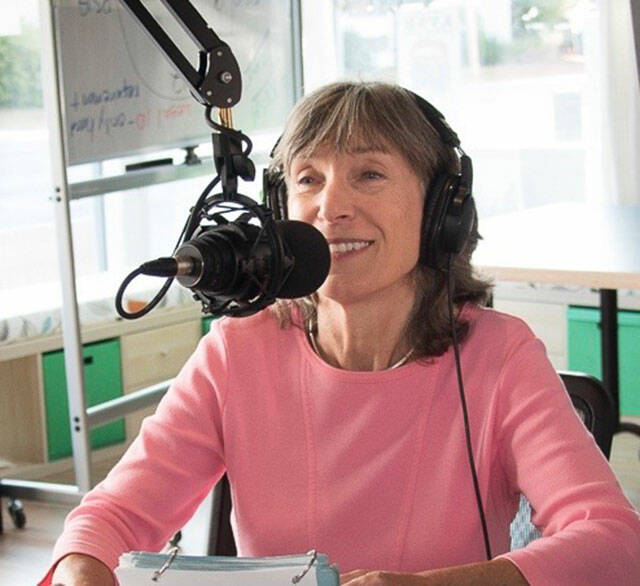There has been a lot of complaining about sleep in the time of COVID.
Some doctors even believe insomnia is a sub-pandemic in its own right, which is ironic considering that all most of us want is to go to sleep and wake up when COVID’s over. All respect to stress from standstill economies, Zooming in your underwear, and grandmothers afraid of their own offspring, but I have to say: what a bunch of newbies!
You see, some of us were wrestling the sheets long before the Red-Spiked Beachball of Doom arrived on the scene. Me, for example.
I have a pretty wild dream life, and several years ago I thought it would be interesting to write down every dream I had for a full year. Beginning on All Saint’s Day and ending the following Halloween, I woke up between two and four times a night, scribbling away while huddled under the blanket so as not to wake my husband. I wound up with a glorious pile of fantabulism—and a mild sleep disorder.
Add to that the parenting of two adolescents and the ungentle hand of menopause. I needed outside assistance, and I don’t mean jets thundering over the bedroom all night long.
I talked to my doctor. Determined to follow all her prescribed recommendations, I kept a sleep journal to track whether my sleep was really as bad as I thought. One of my typical entries looked like this: “Lights out 10:30, 1-hour meditation, 1-hour soft music, 1-hour breathing exercises, 1-hour staring at the ceiling. Gave up at 2:30 and took a pill.”
By “pill” I mean one of those over-the-counter sleep aids whose hangovers make you feel like you’re in the cheap section of a red-eye flight to Argentina with the kid behind you kicking your seat the whole way.
The rest of the list included: screens off an hour before bedtime, douse the lights at the same time every night, get up at the same time every morning, no coffee after noon, no marathon-running after dinner, and no happy hours longer than an actual hour. I’m sure those rules help millions of people who are not me, but wasting time on them meant I was getting older. An estimated 40 to 70% of older adults have chronic sleep problems, and I began to worry that worrying about sleep was feeding the dragon.
I started trying alternative treatments I found on the internet.
The following is a real list of my experiments, each technique attempted a minimum of seven times: CBD, yoga nidra (aka progressive relaxation that included body parts I had previously considered to be insensate), acupressure point tapping, valerian (and other herbal remedies I’d endorse as…ways to spend money), marijuana (which didn’t put me to sleep but did make lying awake more interesting), three weights of comforters, five different sheet fabrics, 25 brands of pillows (including a brief stint wearing one belted onto my stomach to keep me on my back), binaural music (two low-hertz tones of different frequencies played simultaneously), ASMR (sounds of whispering, paper tearing, water sprinklers, etc.), and even unboxing therapy (where you watch or listen as people open things they ordered by mail). Most of these things worked on some nights, but not on most. (Your mileage may vary. I hope it does.)
I have made a few happy discoveries. SleepPhones are a pair of wafer-thin speakers embedded into a headband that can double as an eye mask. The Bluetooth model is nice if you’re a fellow dervisher. I use them for the playlists I’ve created on an app called Insight Timer that has a broad (some might say too broad) selection of guided meditations and nature sounds along with music and ASMR tracks. It’s free, but I like it enough to pay the $60 per year subscription fee.
If I’d rather be read to sleep, there are podcasts like “Listen to Sleep,” “Drift Off: Bedtime Stories,” and “Nothing Much Happens” (which includes twenty-minute play-by-plays of someone going to buy a stamp). Many free versions are front-loaded with ads, so I fast-forward to get to the feature. Also good: really, really boring audiobooks.
When all else fails, I take two Nature’s Bounty melatonin tablets (no other brand works, for some reason), turn on the box fan and play a half-hour of Solitaire on my night-filtered iPad.
I just said “when all else fails,” but there is one last tool in my arsenal. I hesitate to mention it because…well…it’s not for everyone. But if you’ve exhausted every other option, search YouTube for “Hypno-Toad 10 Hours.” Even if you weren’t a “Futurama” fan, you might be surprised how effective this can be!
Cindy Hoyt is a humorist who knows a thing or two about sleep — her upcoming novel, “Lucid,” is about the effect dreaming can have on your waking life.



